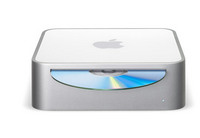We're moved in to our new house now (just a couple blocks from where
we were living, in the same subdivision). The previous owners indicated
that DSL was available in the area (our old house was just barely beyond
the 18,000 feet limit from the telephone companies central office).
I'd been looking forward to the prospect of being an
Xmission customer at home again.
Turns out DSL is not yet (2006!) available. So the only real option is a
Comcast cable modem. The downsides
are they charge you more if you don't also get cable TV from them,
they don't have an option to purchase a static IP address, and while the
download speeds are impressive the upload speeds aren't...
The other odd thing about Comcast is that they think
that our new home is within five miles of Dallas, TX and Irving, TX in addition to Main Street in
Layton, UT(!?).
I submitted an order on their website Tuesday morning and they indicated
that my "order has been electronically forwarded to a Comcast representative.
After your order has been reviewed, a Comcast representative will contact you
to complete/confirm your order. Then you're on your way!"
Two days later they haven't called to "complete/confirm" my order. So
I'm not on my way yet, and I'm guessing I'll still be without Internet
access for another weekend. :-(
— Michael A. Cleverly
Thursday, January 12,
2006
at 09:27
97 comments
| Printer friendly version
We have internet access again—Shauna
called Comcast and told them we really did want to be their customer since
they hadn't ever responded to our online order.

I purchased a Mac Mini last
Saturday which I intend to use as a new firewall since it will run silent
(the antithesis of our old P-133 firewall). I plan on installing the
macppc port of
OpenBSD on it. I haven't configured it yet
since being on call after hours for work (something I get to do every five
to six weeks) did not seem like the wisest time to be making firewall
changes.
I also purchased a second Mac Mini to use as an
Asterisk server for developing telephony
applications. And I picked up a closeout 1.9 GHz G5 17" iMac for only
$1,100 to serve as a new family computer. ...And an Airport Extreme base
station. ...And the family-pack upgrade of OS X 10.4 (Tiger) for my laptop
& Shauna's old iMac.
My new Apple equipment goes along quite nicely with Shauna's new furniture,
at only half the cost! ;-)
— Michael A. Cleverly
Sunday, January 22,
2006
at 18:23
154 comments
| Printer friendly version
I'm starting to work on my promised (in advance!) belated family
Christmas 2005 gift: the collected 2005 blog
book of all my siblings
posts'.
This book may end up being fairly large. Consider the number of posts:
- Michael
- Becca
- Anna
- Rachael
- Talmage
- Mary
- Eliza
- Camilla
- Paul
- Cade
- Dad
- Chris
- Shauna
- Mom
- Robert
Should be a fun typesetting project! My first thought was to list
all posts chronologically (interleaving multiple authors) but Becca and
Shauna have both said they'd prefer to have all of one persons posts
grouped together. Your thoughts?
— Michael A. Cleverly
Sunday, January 22,
2006
at 18:57
143 comments
| Printer friendly version
One of the two mac mini's I bought
was meant to be an OpenBSD
firewall. Reasons for considering a Mac Mini with as a firewall:
- It runs virtually silent
- It uses (comparatively) little power
- It doesn't take up a lot of room
- Running a firewall on a non-Intel architecture makes me feel good
Configuring OpenBSD was more or less straightforward—I did run into
a couple of "gotcha's" but they were easily overcome with a bit of Googling.
OpenBSD initially only wanted to lay claim to eight gigabytes (of the 40 GB disk). The solution was to run fdisk and change the size of the A6 partition.
The USB ethernet adapter works fine (the Mac Mini only has one onboard
ethernet connection, and for a firewall you need two), but there are a lot
of apparently spurious errors logged to the console. Since the maximum speed of the
cable modem link is only a couple of MB/sec I expect the USB ethernet
adapter to hold up fine.
At the end of the installation notes it says you can configure the firmware to
automatically boot into OpenBSD:
Autobooting OpenBSD/macppc
It is possible to automatically boot into OpenBSD (selectably into Mac OS)
by setting up the following:
setenv auto-boot? true
setenv boot-device hd:,ofwboot
[to save the results into NVRAM]
reset-all
These settings assume that the master of the first IDE bus has OpenBSD
installed on it, either in MBR format or in shared mode with ofwboot
copied into the first HFS(+) partition. It is not necessary to specify
'/bsd' on the boot line or in the boot-device variable, since it is the
default.
My experience was that when the boot-device was set just to
hd:,ofwboot the computer wouldn't start up. The only way
I could get it to work was by setting the boot-device to be
hd:,ofwboot /bsd.
Next up: besides a few recommended post-installation steps I'm installing snort, nmap, bash, screen,
tcl, expect & squid.
— Michael A. Cleverly
Monday, January 30,
2006
at 21:19
325 comments
| Printer friendly version
